- Continue Shopping
- Your Cart is Empty
Curtido: Fermented Salvadoran Cabbage Condiment

What You'll Need
Equipment
- measuring spoons
- microplane or zester
- good kitchen knife and clean cutting surface
- large mixing bowl
- 1/2 gallon mason jar
- jar top fermentation kit
Ingredients
- 1 head green cabbage (about 3 1/2 pounds)
- 1 sliced carrot
- 1/2 onion, thinly sliced
- 2 cloves garlic, grated
- 1 tablespoon dried oregano, crumbled
- 2 teaspoons chile pepper flakes
- 1/4 teaspoon ground cumin, or to taste
- 1- 1 1/2 tablespoons unrefined sea salt
This recipe comes from the Shockey’s first book, Fermented Vegetables: Creative Recipes for Fermenting 64 Vegetables & Herbs in Krauts, Kimchis, Brined Pickles, Chutneys, Relishes & Pastes
Directions
Prepare the cabbage. Remove the coarse outer leaves. Rinse a few unblemished ones and set them aside. Rinse the rest of the cabbage in cold water. 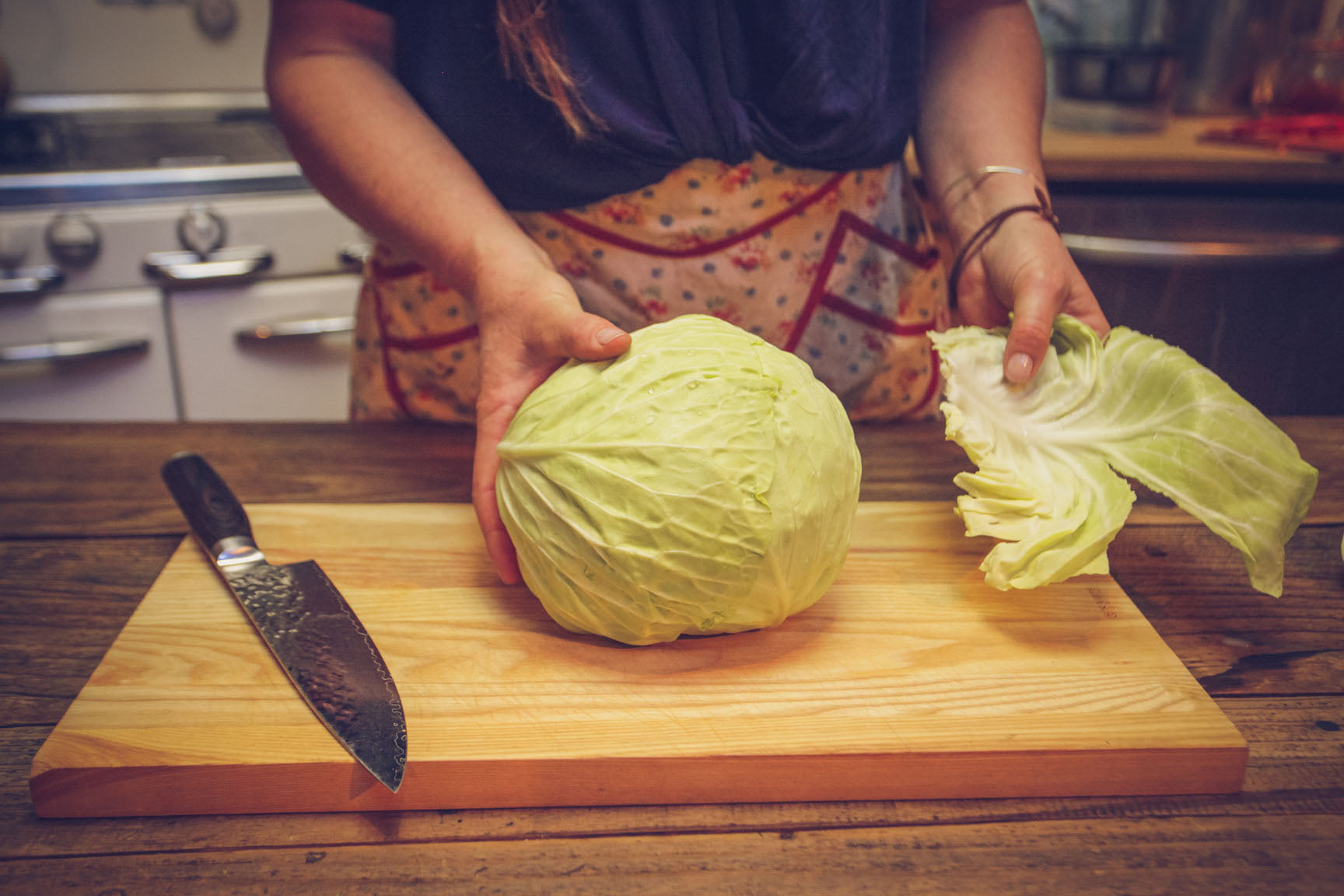
Quarter and core the cabbage. Thinly slice the cabbage with a sharp knife or a mandoline, until the desired texture is reached. Transfer the cabbage to a large bowl.
Add a tablespoon of salt, and massage it into the leaves. 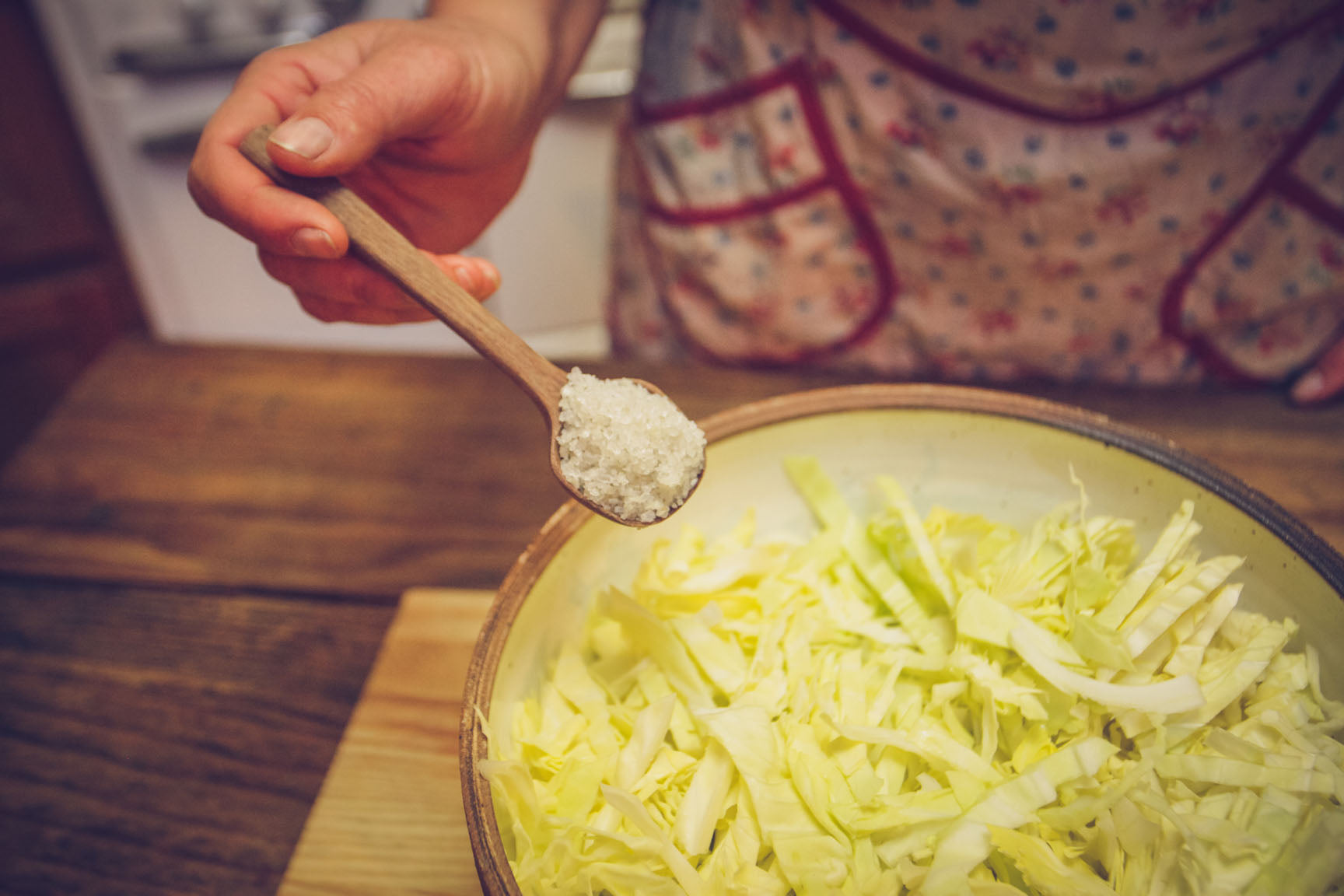 Let the cabbage rest for 15 minutes while the salt works its way into the cell walls, creating a softened texture. Or, keep massaging the kraut to speed things up.
Let the cabbage rest for 15 minutes while the salt works its way into the cell walls, creating a softened texture. Or, keep massaging the kraut to speed things up. 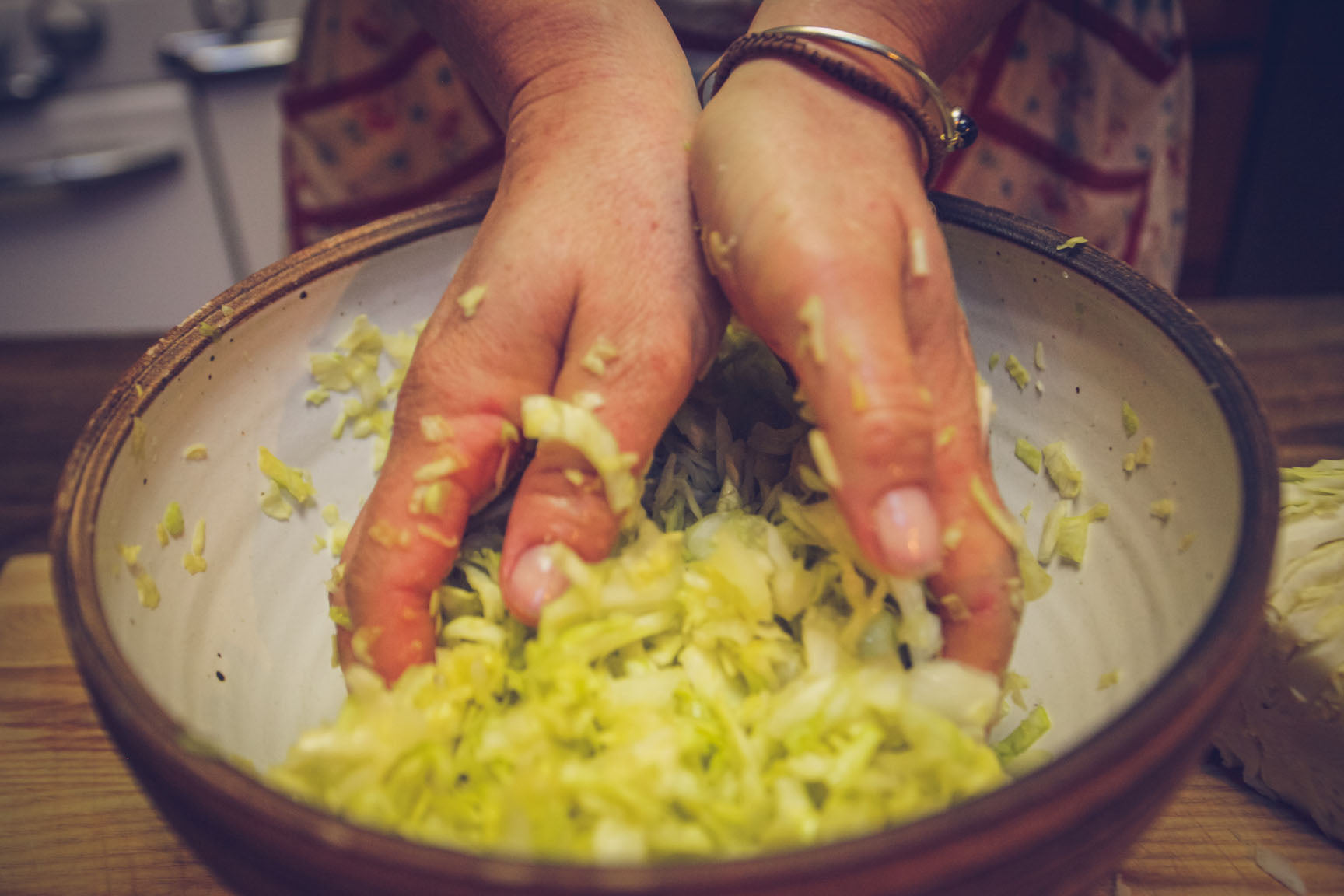 Either way, a nice pale green brine should form at the bottom of the bowl, and the cabbage, when squeezed in the palm, should release more of the same. Taste the cabbage. You should be able to clearly taste the salt, but it should not be overwhelming. If desired, add another teaspoon of salt, until the desired saltiness is reached.
Either way, a nice pale green brine should form at the bottom of the bowl, and the cabbage, when squeezed in the palm, should release more of the same. Taste the cabbage. You should be able to clearly taste the salt, but it should not be overwhelming. If desired, add another teaspoon of salt, until the desired saltiness is reached.
Peel and slice the carrots, and slice the skinned onion thinly.  Add these to the cabbage and toss to combine.
Add these to the cabbage and toss to combine. 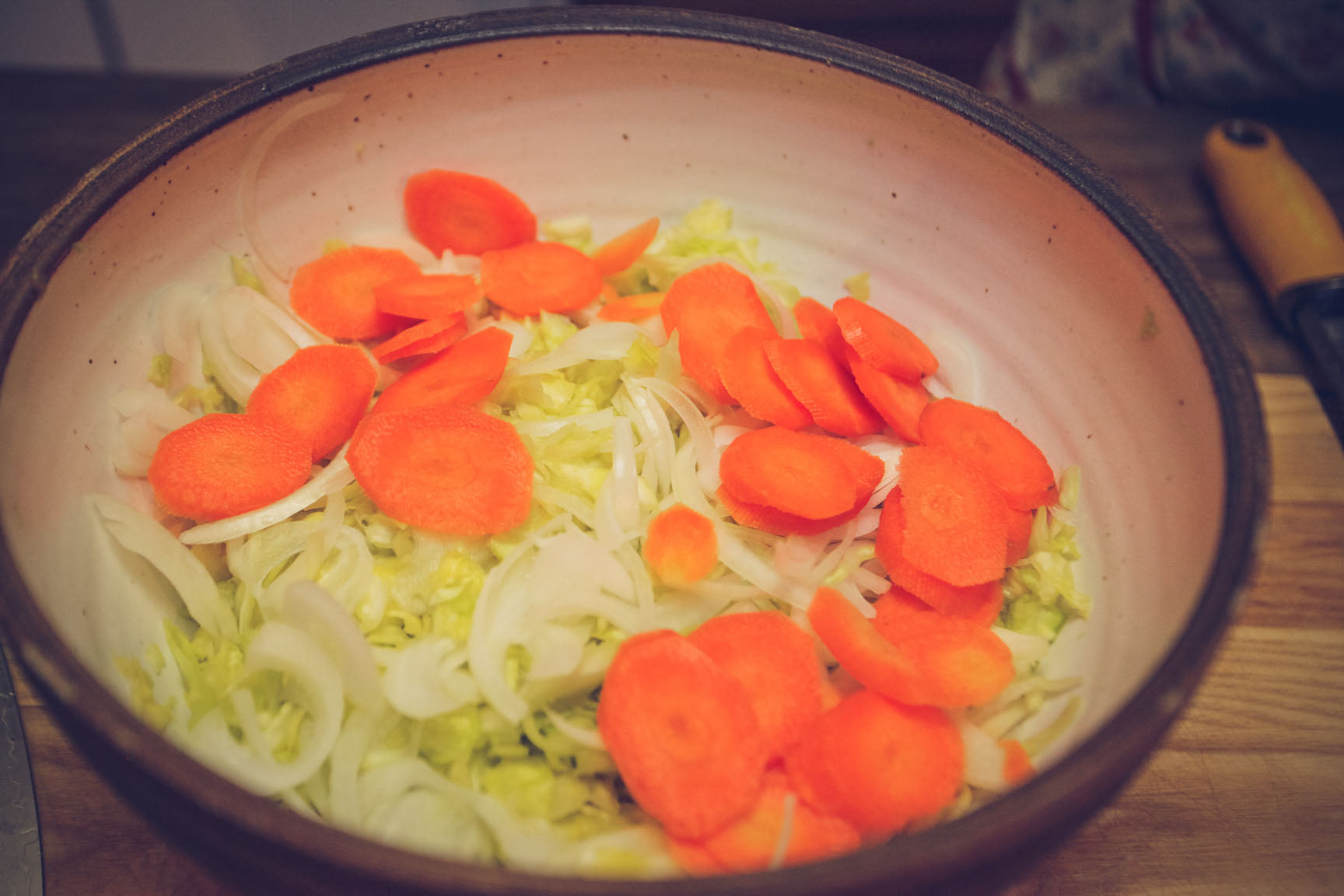
Add the spices and grate the garlic cloves over the bowl. Toss with your hands until the additions are evenly distributed.
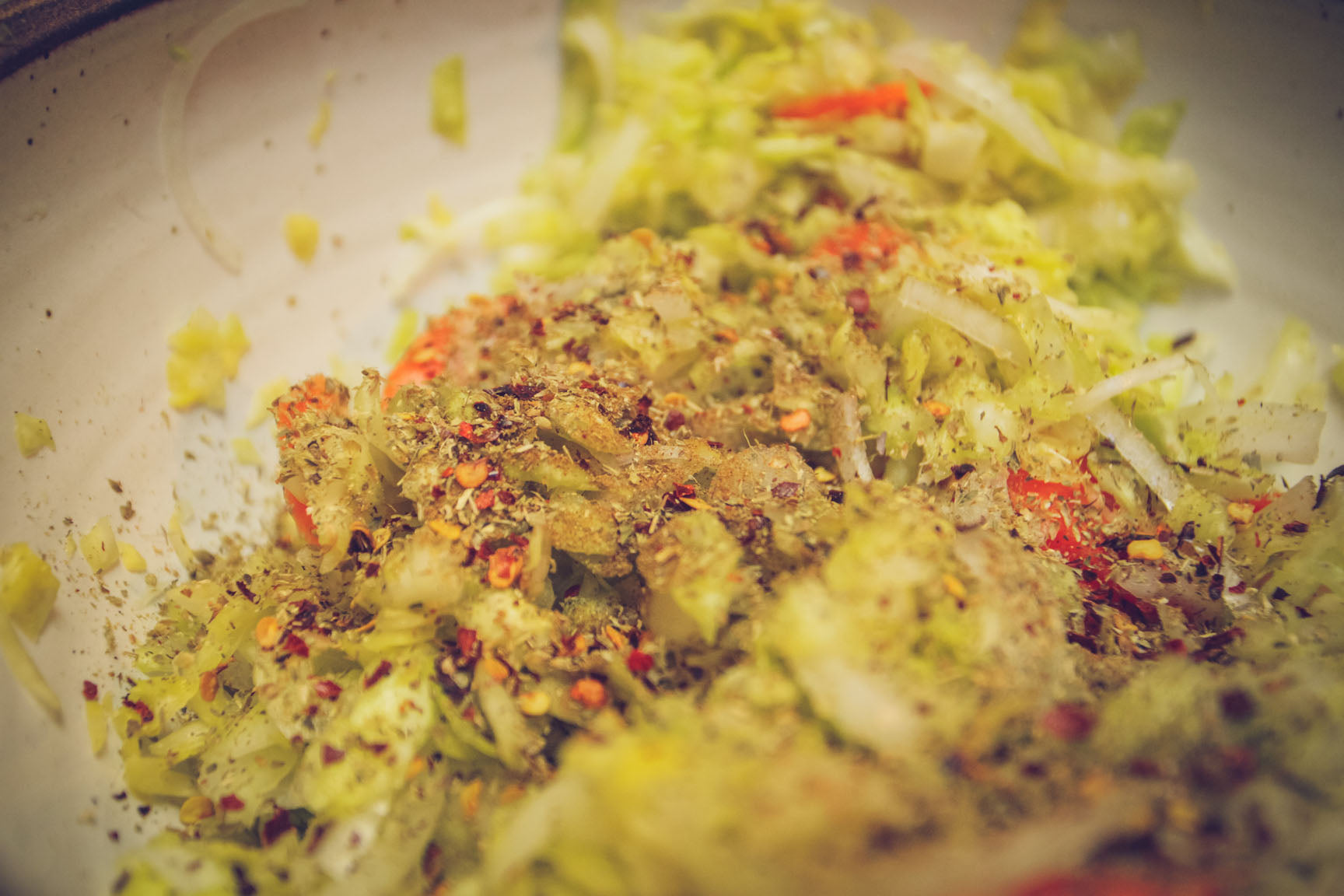
 Transfer the curtido to a half gallon jar, a few handfuls at a time, packing down on the cabbage with your fist or a tamper to work out air pockets.
Transfer the curtido to a half gallon jar, a few handfuls at a time, packing down on the cabbage with your fist or a tamper to work out air pockets.  You should see some brine on the top of the cabbage as you press down. Leave 2-3 inches of headspace.
You should see some brine on the top of the cabbage as you press down. Leave 2-3 inches of headspace.
Top the curtido with one or two of the reserved cabbage leaves, folded over to fit into the jar. If necessary, use a glass or ceramic weight, or a small jelly jar, to keep the cabbage submerged beneath the brine.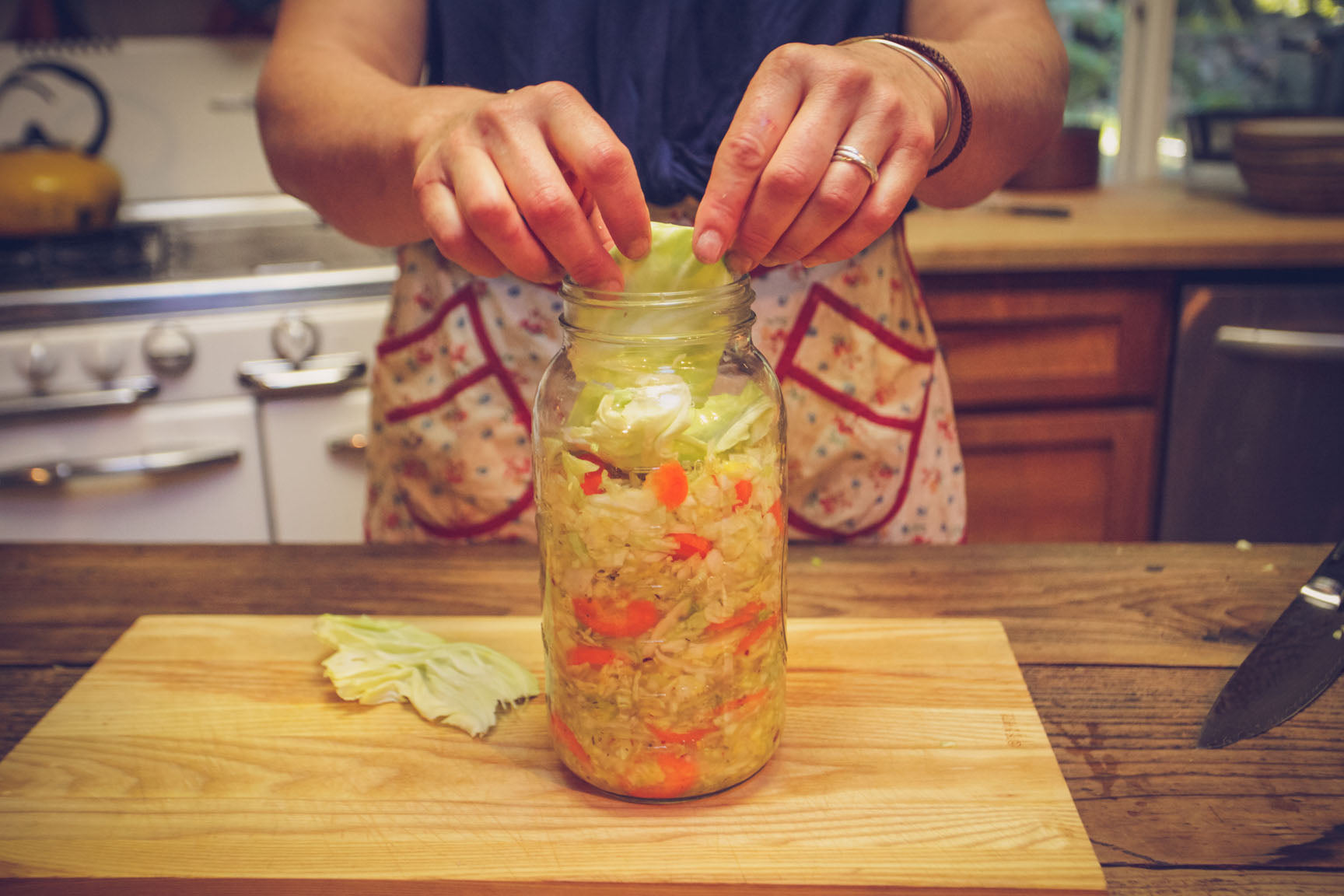
Affix a jar top fermentation kit like this KrautSource and secure the band.
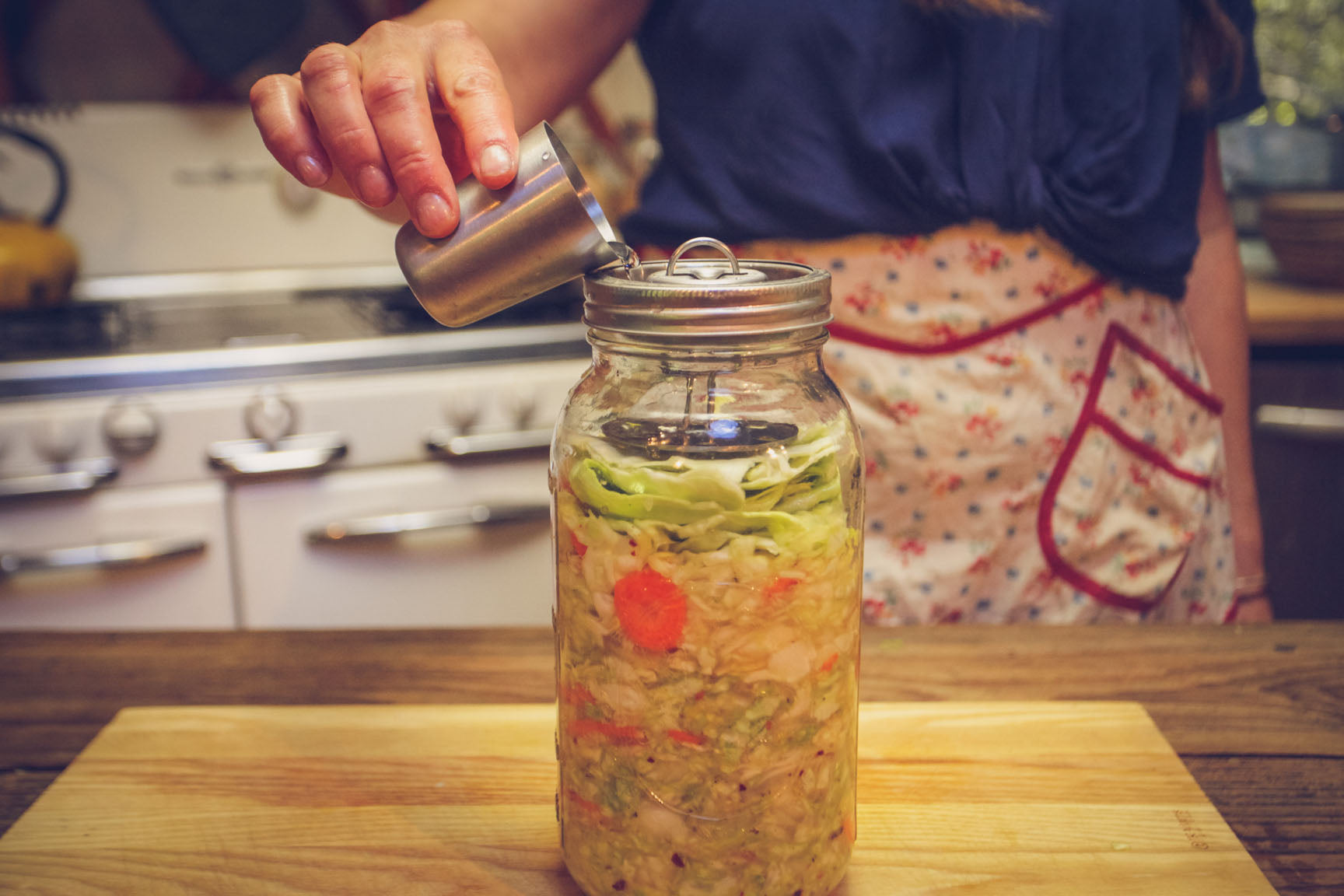 Set the jar aside nearby, at cool room temperatures, but out of direct sunlight. Check daily for the first week, pressing down the cabbage to keep it submerged beneath the brine, as needed.
Set the jar aside nearby, at cool room temperatures, but out of direct sunlight. Check daily for the first week, pressing down the cabbage to keep it submerged beneath the brine, as needed.
Allow the curtido to ferment for 4-14 days. That’s a long range of time, but it all depends how sour you like it. The longer the ferment, the sourer it gets! two weeks is usually about right.
Enjoy the curtido as you would sauerkraut, spoon it on tacos or as a side with warm, saucy dishes. It is a perfect foil for almost any cuisine, tangy and bright and full of probiotic goodness.
Over to You
It’s part of our mission here at Mountain Feed to help you make delicious, sustainable, homemade food more often. Stop by and say hello on Facebook, Twitter, Instagram or Pinterest. Or, as always, you can do it the old-fashioned way and come by the store to speak with one of our in-house experts.
